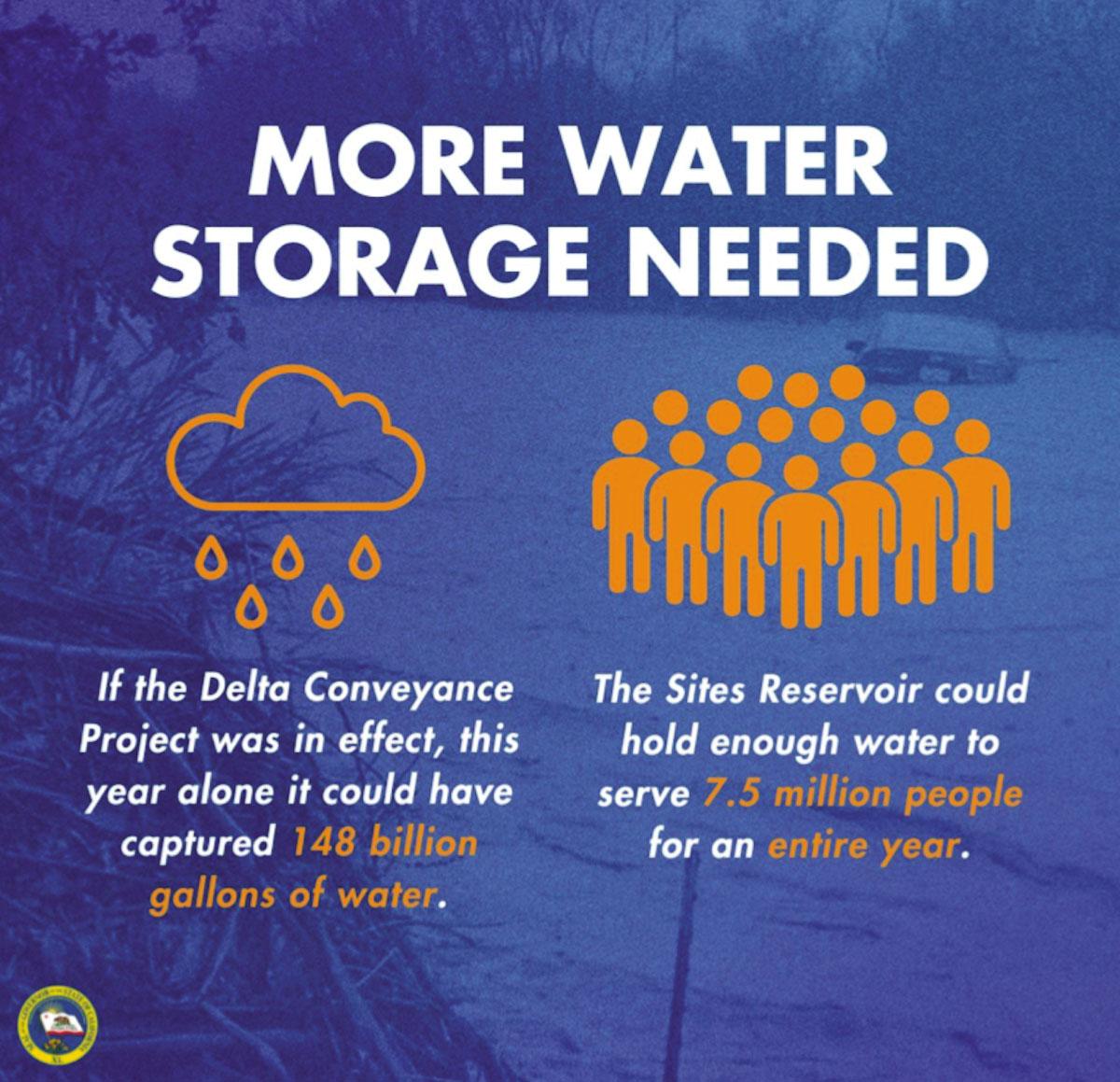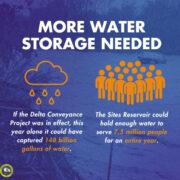
SACRAMENTO – California is taking advantage of this year’s storms to expand water supplies, building off of last year’s actions to capture stormwater. Last year, the Newsom administration’s actions resulted in three times more groundwater recharge capacity than would have otherwise occurred. Since 2019, the Governor has allocated $1.6 billion for flood preparedness and response, part of the historic $7.3 billion investment package and to strengthen California’s water resilience.
Here’s what the state is doing this year to capture water:
- 45 billion gallons: That’s how much water California has either permitted or is working to permit for groundwater recharge, enough for 1.3 million Californians’ yearly usage – all during this wet season alone.
- Capturing 95% of stormwater runoff: The state-funded Santa Anita Dam captured 95% of the stormwater runoff to groundwater recharge facilities in the San Gabriel River Watershed.
- Nearly $1 billion to capture more water: California has distributed nearly $1 billion to support 13 recharge, recycled water, and other stormwater capture projects that will add more than 28 billion gallons to the state’s water supplies every year.
- Better stormwater capture: California has invested more than $160 million to capture, store, and reuse stormwater runoff – helping local governments like Los Angeles County bolster their stormwater infrastructure.
Here’s what the state did last year to boost California’s ability to capture water:
- Expanding supply & storage by 358 billion gallons: California bolstered supply and storage through groundwater recharge and other projects, enough for 2.2 million households’ yearly usage.
- Executive orders & legislation to capture & store more water: During last year’s storms, Governor Newsom signed executive orders and legislation to accelerate stormwater capture to boost groundwater recharge and other conservation measures.
- More groundwater recharge & stormwater capture: The state is expanding groundwater recharge by 180 billion gallons in potential capacity – streamlining permits and $1 billion for groundwater recharge projects.
But more water storage is needed – if the Delta Conveyance Project was in effect, this year alone it could have captured 148 billion gallons of water; the Sites Reservoir could hold enough water to serve 7.5 million people for an entire year.
These winter’s storms are another example of California’s changing climate and shifts from one extreme to another. California has gone from a historic 3-year drought to historic snowpack last year, to a series of very intense, warmer, wetter storms that are bringing more rain than snow. As of Wednesday, February 21, the statewide snowpack is 85 percent of average for this date, and 67 percent of its April 1 average, which is considered the peak snowpack for the season.
As outlined in Governor Newsom’s Water Supply Strategy, these kinds of extremes are why we need to continue to invest and be ready with water management strategies like stormwater capture, groundwater recharge, and recycled water to ensure that our water supply remains safe and reliable in a changing climate. (Gov. Newsom’s Office Release)







